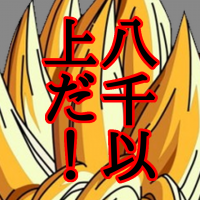Poruke: 5
Jezik: English
jakeallstar1 (Prikaz profila) 27. travnja 2021. 13:41:18
When I try to look up the way people pronounce one of them I swear I think they're doing the exact opposite than the way I remember with the other word. Can someone settle this please and thank you.
nornen (Prikaz profila) 27. travnja 2021. 14:31:03
Any Spanish or Italian word you know can be a guideline.
Eg. Guatemala, Cancún, Roma, spaghetti, penne, etc
jakeallstar1 (Prikaz profila) 27. travnja 2021. 14:44:23
nornen:Take for instance "guacamole". There you have an Esperanto a in the middle and an Esperanto e at the end.Ah the Spanish and Italian as guidelines helps. So like Spanish abla is the correct way to say the Esperanto "a" bona? And the last "e" in the Italian penne is the correct way to say "bone"?
Any Spanish or Italian word you know can be a guideline.
Eg. Guatemala, Cancún, Roma, spaghetti, penne, etc
nornen (Prikaz profila) 27. travnja 2021. 15:04:39
jakeallstar1:Yes, Spanish "habla" contains two Esperanto As; Italian "penne" contains two Esperanto Es, not only the last one.nornen:Take for instance "guacamole". There you have an Esperanto a in the middle and an Esperanto e at the end.Ah the Spanish and Italian as guidelines helps. So like Spanish abla is the correct way to say the Esperanto "a" bona? And the last "e" in the Italian penne is the correct way to say "bone"?
Any Spanish or Italian word you know can be a guideline.
Eg. Guatemala, Cancún, Roma, spaghetti, penne, etc
For "bona" and "bone" just go with Italian "buona" and "buone", but ignore the "uo" diphthong.
Mi casa es su casa.
If you pronounce Texas in Spanish, you also get both vowels right: Teĥas.
jakeallstar1 (Prikaz profila) 27. travnja 2021. 15:26:03
nornen:Thanks this helps a lot!jakeallstar1:Ah the Spanish and Italian as guidelines helps. So like Spanish abla is the correct way to say the Esperanto "a" bona? And the last "e" in the Italian penne is the correct way to say "bone"?Yes, Spanish "habla" contains two Esperanto As; Italian "penne" contains two Esperanto Es, not only the last one.
For "bona" and "bone" just go with Italian "buona" and "buone", but ignore the "uo" diphthong.
Mi casa es su casa.
If you pronounce Texas in Spanish, you also get both vowels right: Teĥas.
